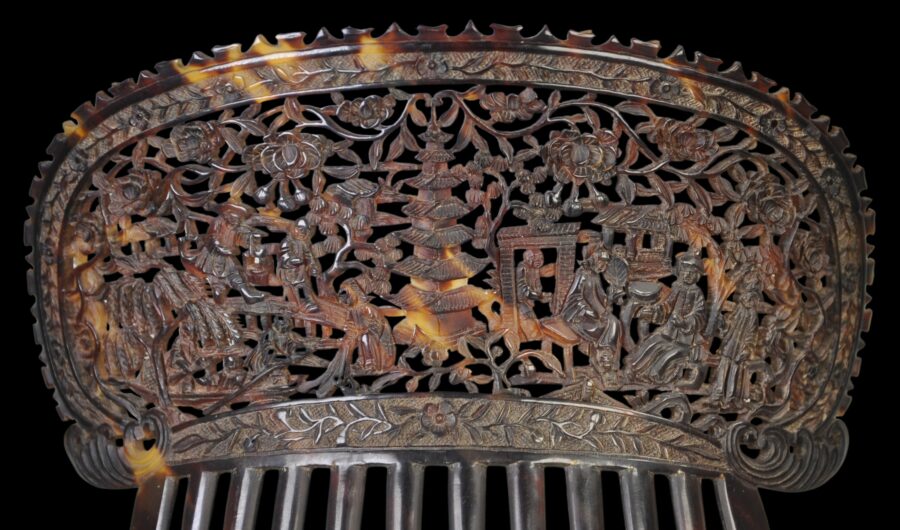This unusually large and rather spectacular curved comb of pierced and engraved tortoiseshell was made in southern China in the first part of the nineteenth
century, most probably for export to Spain where the fashion was to wear high headdresses (the mantilla) with lace veils or scarves pulled up over such a
comb. Related examples also were made in the Philippines, both for export to Spain and also for local use by women who had adopted Spanish fashions.
The combs were inserted into a large hair bun. They went out of fashion when shorter hair styles became more popular at the start of the 20th century.
The panel that comprises the grip is pierced and decorated with a typically Chinese scene of a central tiered pagoda, willows, figures seated chatting and other flowers.
The outer edge of the grip is serrated to allow the lace headscarf to be caught on the comb, to hold it in place.
There are twelve long teeth.
The comb is in excellent condition. The tortoiseshell used has splendid colouring and mottling. The shell used is commonly referred to as tortoiseshell but more correctly is from a sea turtle, most probably the Hawksbill Sea Turtle (Eretmochelys imbicata).
See a related example sold by us to Singapore’s Asian Civilisations Museum.

Above: Two Spanish women wearing particularly high manilla, early 20th century.
References
Cruse, J., The Comb: Its History and Development, Robert Hale Ltd, 2007.









